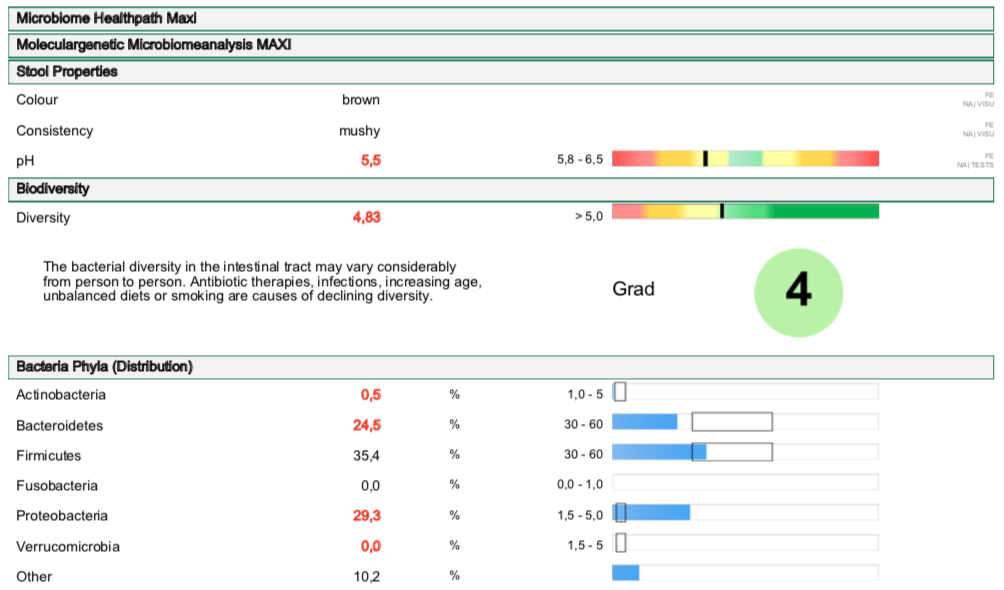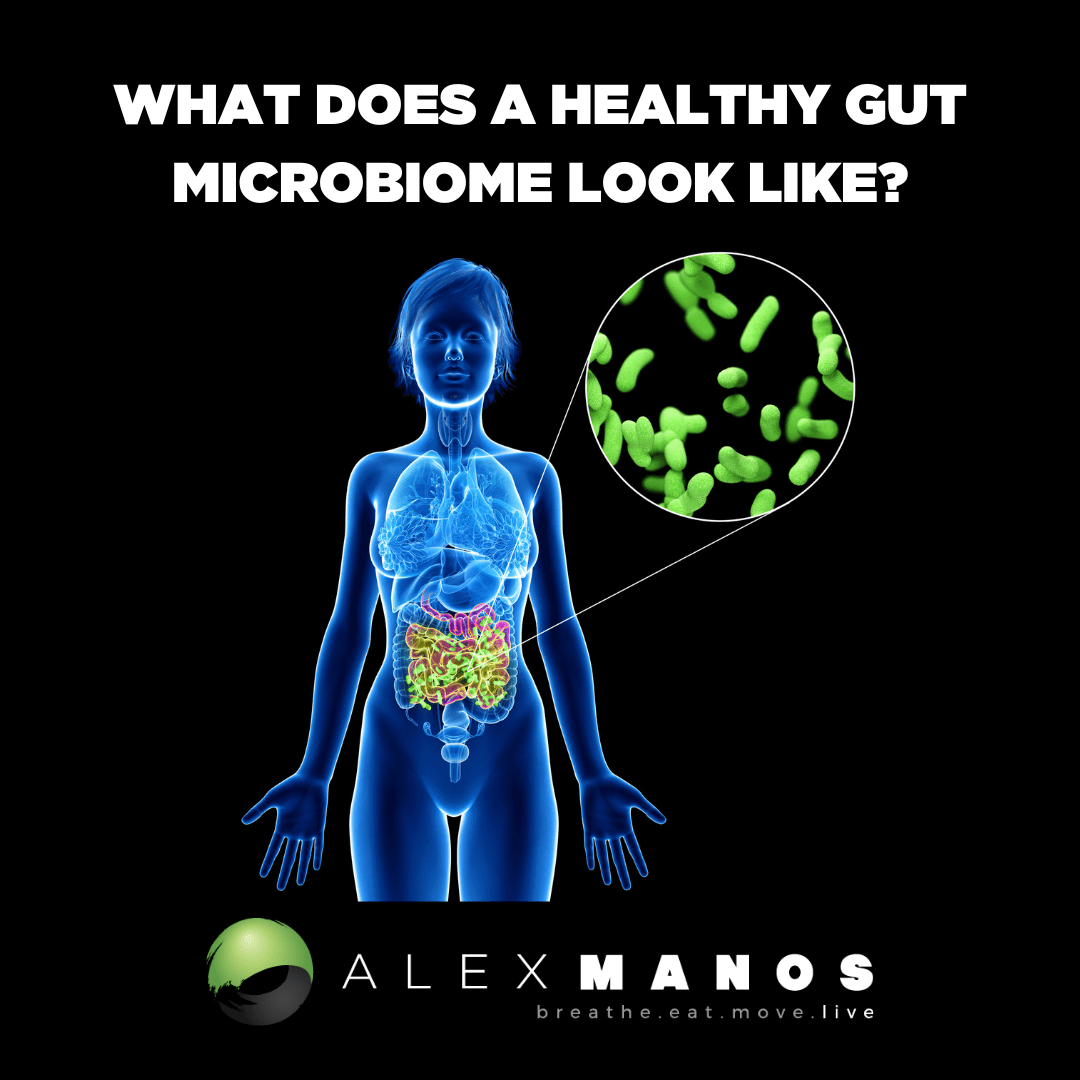Welcome to my blog post ‘What Does A Healthy Gut Microbiome Look Like?’ where I discuss some of the research exploring the connection between our gut microbiome and thyroid function.
You may also be interested in the section of my blog dedicated to gut health, click here, in particular:
- The Gut Microbiome In Multiple Sclerosis: What Bacteria Are Involved
- Psychobiotics: Probiotics For Mood And Mental Health
Humans are virtually identical in their genetic makeup, yet the small differences in our DNA give rise to tremendous phenotypic diversity across the human population. By contrast, the metagenome of the human microbiome—the total DNA content of microbes inhabiting our bodies—is quite a bit more variable, with only a third of its constituent genes found in a majority of healthy individuals.
Understanding this variability in the “healthy microbiome” has thus been a major challenge in microbiome research.
What Does A Healthy Gut Microbiome Look Like?
Humans have co-evolved with the trillions of microbes that inhabit our bodies and that create complex ecosystems that are finely attuned to constantly changing our physiology. Dysbiosis in the microbiome has been associated with numerous diseases, including inflammatory bowel disease, multiple sclerosis, diabetes (types 1 and 2), allergies, asthma, autism, and cancer (2).
Like the concept that a single organism can be pathogenic (disease causing), dysbiosis of a microbial community can be difficult to define but could be considered as:
a perturbation that departs from an otherwise balanced ecology to prolong, exacerbate, or induce a detrimental health effect.
Thus, finding features that broadly distinguish healthy from unhealthy microbiomes will aid in the diagnosis of microbiome-related diseases and could potentially provide new means to prevent disease onset or to improve prognosis.
How Do I Know If My Microbiome Is Healthy?
Many potential features common to healthy microbiomes have been proposed, including (2):
- Prevalent organisms such as Akkermansia and Fecalibacteriam
- Prevalent molecular pathways
- Diversity
- Stability
Microbiomes regularly show a large degree of interpersonal diversity even in the absence of disease. This complicates the identification of simple microbial constituents or imbalances that either cause disease or reflect a diseased state. An understanding of the properties of a healthy microbiome, and the many different microbial ecologies that are encountered in the absence of overt disease, is therefore a necessary first step to identifying and correcting microbial configurations that are implicated in disease (2).
Microbiome Diversity
Given the typical observation of increased microbiome diversity in health, it has been hypothesised that developed countries’ consistently reduced gut microbial diversities may account for higher chronic disease rates relative to those seen in developing countries and primitive societies, termed the “disappearing microbiome hypothesis”. This loss of diversity may be linked to a high-fat, high-refined-sugar, and low-fiber diet.
Humanised mice on such a diet exhibit a depletion in microbial diversity and though this is recoverable by returning to a high-fiber diet within a generation, it becomes fixed after four generations (2).
If this result generalizes to human populations, it increases the urgency of developing rationally targeted microbiome maintenance or therapeutic methods, so as to steer less health-promoting microbiomes towards more natural assemblages. The disappearing microbiome hypothesis in some ways represents an evolution of the “hygiene” or “old friends” hypotheses, all of which suggest that while modern North American or European cohorts may represent “healthy” microbiomes, their relationship to what is evolutionarily “normal” may be more complex (2).
We can look at microbiome diversity on comprehensive stool testing such as those available from healthpath. A sample of the report indicating someones diversity score can be seen here:

Resistance, Resilience and Stability: The Signs Of A Healthy Microbiome
Other hallmarks of a healthy gut microbiome are the ability to resist perturbation (which might result from the entry of a pathogen (a bad bug), alteration of diet, or medications such as antibiotics) and to return to a healthy state afterwards.
These properties have been termed resistance and resilience, respectively (2).
For example, after an antibiotic treatment, healthy gut communities generally recover to their previous state after a few weeks to months. A recent definition of microbial health thus explicitly comprises not a single static state but rather a dynamic equilibrium (2).
Summary of ‘What Does A Healthy Gut Microbiome Look Like?’
- A healthy microbiome looks like an ecosystem which is diverse, resistant, resilient and stable.
References of ‘What Does A Healthy Gut Microbiome Look Like?’:
- The hunt for a healthy microbiome: click here.
- The Healthy Human Microbiome: click here.
- Daily Sampling Reveals Personalised Diet-Microbiome Associations in Humans: click here
- Diversity disease relationships: click here.
- Photobiomics: Can Light, Including Photobiomodulation, Alter the Microbiome: click here.
- The role of the gut microbiome in the healthy adult status: click here.
- Gut Microbiome: Profound Implications for Diet and Disease: click here.
Alex is a certified Functional Medicine Practitioner (IFMCP) and has a MSc in Personalised Nutrition. He is also a breathwork facilitator with a background in personal training and massage therapy. He also runs The Resiliency Program - a 24 week program aimed at building physical, mental, emotional, and spiritual resilience.



